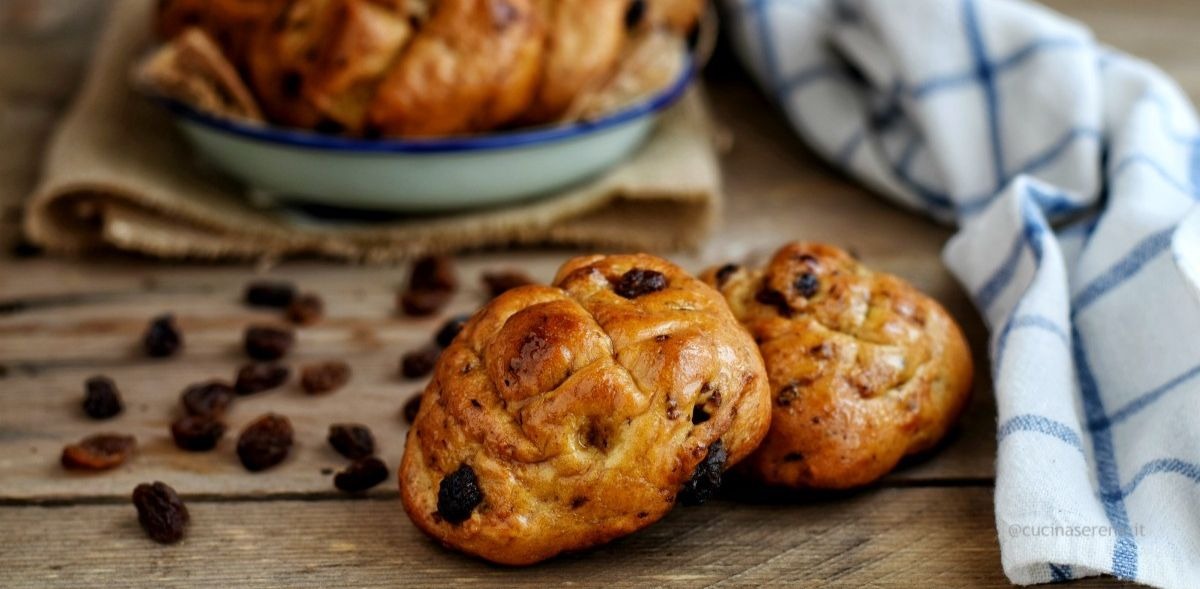
Florence culinary tour 4th stage "from the oven"
Curiosities and recipes of two stars of Tuscan bakeries: schiacciata with oil and Pan di Ramerino.
There is no Tuscany without its traditional baked goods. Throughout the region, and certainly in the main cities, each neighborhood has its trusted bakers with their hands always covered in flour and a display cabinet with warm lights spotlighting trays and trays of schiacciate, pizzas, pizzette, panini (both sweet and salty) and biscuits. Behind the strong shoulders of the bakers with their years of experience and nights spent kneading, the wooden shelves are filled with all shapes and variations of salt-free bread (typical Tuscan), from white to dark bread, wood-baked bread, panaccio, and so on.
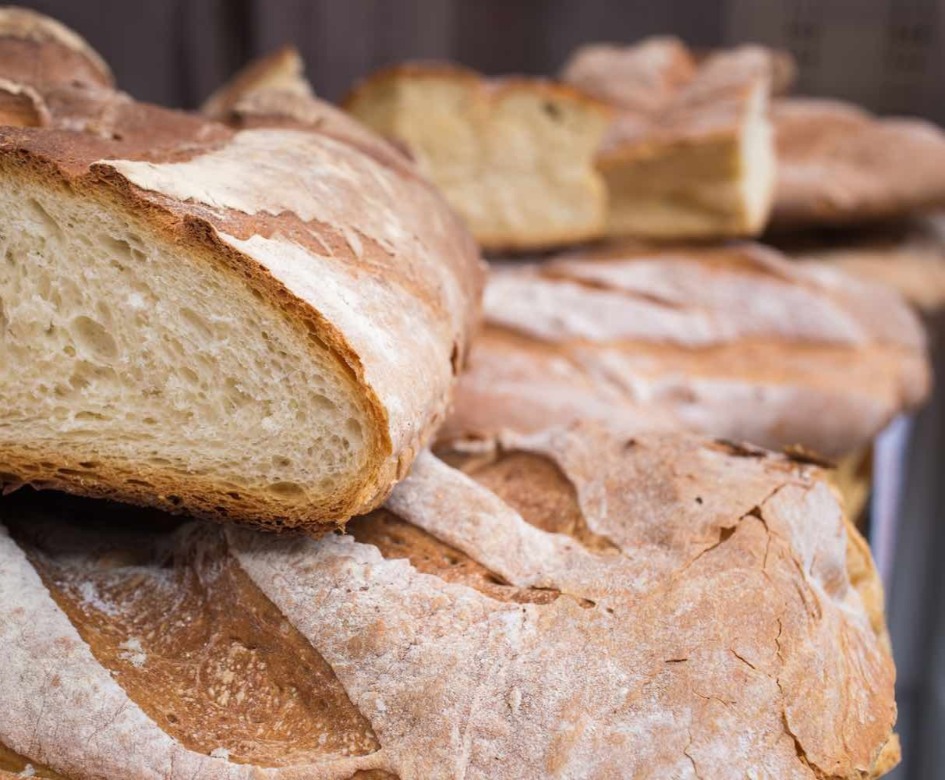
"Let's stop by the baker"
Thus begins the stop for snacks following school for most children. Baked goods are a typical part of Tuscan culinary culture. Most often, Tuscans favour savouries such as cold cuts, livers, oil and meats, so baked goods are inevitable companions! Those who visit Florence also spend hours in line, as for example at the Antico Vinaio in Via de Neri, to take a bite of one of their famous schiacciate stuffed with cold cuts, cheese and sauce.
Precisely for this reason, for our fourth stop on our Culinary Tour of Florence, it seemed only right to shed some light on two of our most typical baked goods: the very famous schiacciata with Tuscan oil (salted) and the lesser known ramerino bread (sweet).
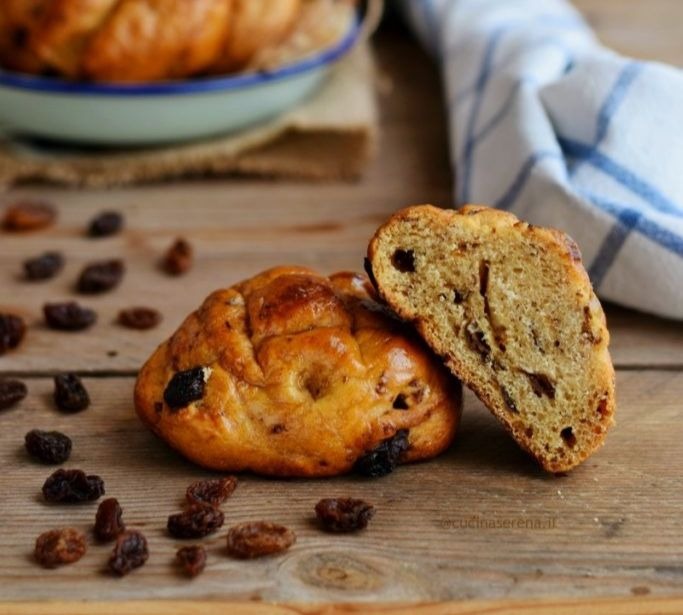
Photo credits: https://www.cucinaserena.it/2018/03/pan-ramerino/
CURIOSITIES
- SCHIACCIATA WITH OIL: schiacciata with oil is a type of focaccia typical only to Tuscany. It is characterized by the "holes" present on the surface once cooked. In fact, before baking schicciata dough, you must use your fingers to puncture it. Rustic in appearance, the crust is usually crunchy, unlike other focaccias, however, there are various recipes.
- PAN DI RAMERINO: it’s a small, soft and sweet bun topped with sultanas (raisins) and rosemary. Until not long ago, it was eaten almost exclusively during Easter and was only on sale for Holy Thursday. Today, it can be found all year round. The typical bread takes its name from ramerino, a Tuscan term for rosemary.
AGNESE’S RECIPES
By now you should know our chef who gives us her unmissable and exclusive recipes: let's roll up our sleeves and get ready to bake with Agnese Pugi (on Instagram, with recipes in Italian and English!).
SCHIACCIATA WITH OIL
Measurements for a classic baking tray (about 35x45), a very easy recipe for everyone!
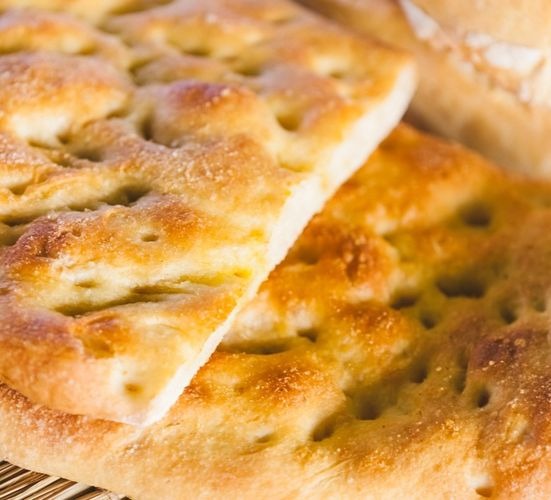
Photo credits: https://www.ilgiornaledelcibo.it/ricetta/schiacciata-allolio/
- 300g 00 flour
- 100g manitoba flour
- 225g warm water
- 8g fresh brewer's yeast
- 30g extra virgin olive oil
- 15g fine salt
- Extra virgin olive oil, water, and salt for seasoning before placing in the oven
- Dissolve the yeast in warm water. In a large bowl, mix all the ingredients together except the salt.
- Once well mixed, add the salt and knead until smooth.
- Coat the tray with parchment paper, oil the surface, place the ball of dough in the centre and cover the entire surface of the tray with plastic wrap.
- Put to rise in a humid and warm place (the oven turned off with the light on is perfect).
- After 45 minutes, spread the dough with your fingertips from the inside outwards, cover with plastic wrap and put in the oven to rise.
- After another 45 minutes, repeat the above step. This action must be repeated every 45 minutes until the dough has completely covered the tray (it will take about 2/3 hours).
- After the final step, leave to rise covered with plastic wrap for another 30 minutes.
- Tap the dough with your fingertips to create the typical schiaccata holes. Season with oil, salt and a little water splashed with your fingers (to keep a little humidity inside).
- Bake at 220°c for about 25 minutes.
- Once taken out of the oven, leave to rest for 10 minutes to allow the remaining oil to absorb.
PAN DI RAMERINO
Makes about 8 pan di ramerino
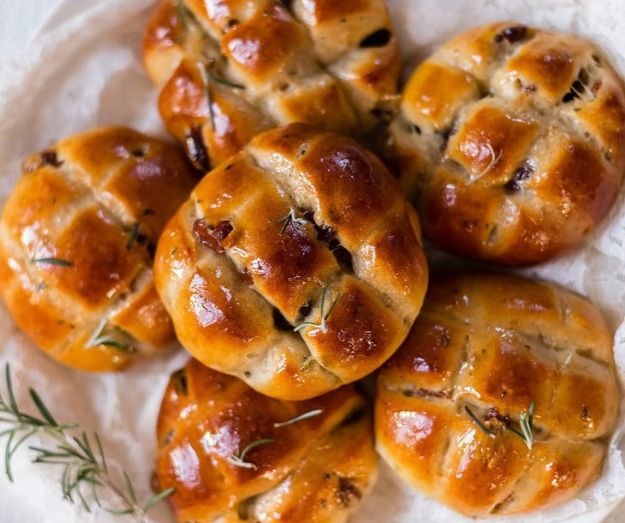
Photo credits: https://toscanareggelloturismo.altervista.org/il-pan-di-ramerino/
For the dough:
- 300g 00 flour
- 200g Manitoba flour
- 25g brewer's yeast
- 250ml water
- 8 tablespoons of olive oil
- 120g raisins
- 2 tablespoons of freshly chopped chopped ramerino (rosemary!)
- 2 spoons of sugar
- 1/2 teaspoon salt
For the glaze:
- A little oil
- 1 egg yolk
- 2 spoons of water
For the syrup:
- 3 spoons of sugar
- 2 spoons of water
- First, we prepare the basic dough by working the flour with the yeast dissolved in warm water until we have an even dough. Cover it and leave to rise for about 40 minutes (or until the dough has doubled in volume).
- In the meantime, put the oil in the saucepan with the raisins and rosemary and let it warm up a bit, it must absolutely not fry but only heat up, for about 20/25 minutes. With this step, the oil becomes better flavored and the dough acquires greater flavor.
- Once the leavening is over, add the oil with the rosemary and raisins prepared previously, along with the sugar and salt. Work very well by hand for about ten minutes by vigorously beating the dough on a pastry board. Initially the mixture will separate slightly, but will then recover its shape.
- Divide the mixture into 8 balls and let them rise for about an hour (or until doubled in volume) directly on the tray where we will then cook them.
- Brush the surfaces with oil and create the 4 typical cross-cuts, making a fairly deep cut into the dough.
- Bake at 180°c for 15 minutes, then brush with the beaten egg yolk with 2 tablespoons of water and finish cooking for another 15 minutes at 180°c.
- Prepare the syrup for the final coating, dissolving the 3 tablespoons of sugar in 2 tablespoons of water on low heat and let it cool.
- As soon as we take out the rolls and while they are still hot, brush them with the prepared syrup.
Buon appetito!
Don't miss the other stops on our Florentine culinary tour!
- Stage 5: "antipasti"
You may also be interested in: La dolce vita fiorentina
Photo header credits: https://www.cucinaserena.it/2018/03/pan-ramerino/
Photo header credits: https://www.cucinaserena.it/2018/03/pan-ramerino/

Photo credits: https://www.pixelicious.it/2016/02/22/pan-di-ramerino/






 All the services are provided by local merchants
All the services are provided by local merchants By using this site you support Florence
By using this site you support Florence We offer products with high-quality standards
We offer products with high-quality standards You stay sustainable
You stay sustainable It's a 100% trustworthy website
It's a 100% trustworthy website